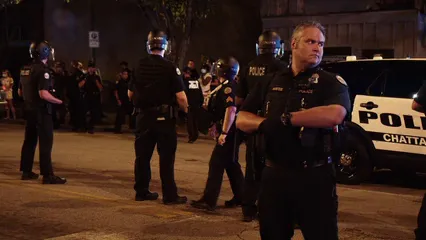Introduction
St. Paul, Minnesota, is a vibrant city with a rich history. Nestled along the banks of the Mississippi River, it boasts a population of around 311,000 people. As the capital of Minnesota, St. Paul serves as a political and cultural hub, home to a variety of attractions, parks, and historical sites. Its diverse neighborhoods reflect the city’s melting pot of cultures, making it a unique place to live and visit.
However, like any city, St. Paul faces challenges, particularly regarding crime. Understanding crime statistics is crucial for residents, potential movers, and policymakers. These figures provide insight into safety, security, and community well-being. By familiarizing themselves with local crime data, individuals can make informed decisions about their neighborhoods, investments, and safety measures.
Speaking of safety, have you considered how prepared you are for emergencies? An Emergency Preparedness Kit can provide peace of mind in unpredictable situations. It’s like having a superhero in a box, ready to save the day when the unexpected strikes!
In this comprehensive guide, we’ll break down crime statistics in St. Paul into various categories. We’ll look at violent crime, property crime, and how these rates compare to national averages. With this information, readers can gain a clearer picture of the safety landscape in St. Paul and better understand the issues at hand.

Understanding St. Paul Crime Statistics
Overview of Crime in St. Paul
St. Paul has a total crime rate of 50 per 1,000 residents, positioning it among the higher crime areas in the United States. This statistic implies that the city has its fair share of crime, raising concerns for its residents. The chance of becoming a victim of crime in St. Paul is a sobering reality. For any crime, the likelihood stands at 1 in 20. When considering violent crimes specifically, the odds improve a bit, with a 1 in 143 chance. However, property crime presents a more concerning picture, with a 1 in 23 chance of falling victim.
These statistics highlight the importance of community awareness and vigilance. Residents must remain informed about their surroundings and take necessary precautions to enhance their safety. The crime rates serve as a reminder that while St. Paul is a wonderful place to live, understanding the local crime landscape is essential for ensuring personal and community safety.
To bolster your personal safety, consider investing in a Personal Safety Alarm. It’s a small device that packs a big punch! With just a pull of a pin, you can emit a loud siren that can scare off potential threats and alert others to your situation. It’s like having a personal bodyguard that fits in your pocket!
Crime Rate Breakdown
Understanding crime statistics in St. Paul starts with the numbers. The overall crime rate stands at 50 incidents per 1,000 residents. This places St. Paul among the higher crime areas in the United States.
When we break it down further, we see the violent crime rate at 7.02 per 1,000 residents. This rate includes various types of crimes that pose a direct threat to personal safety. Meanwhile, property crime rates in St. Paul are significantly higher, reaching 42.60 per 1,000 residents. This disparity highlights a stark difference in the nature of crime residents may face.
To visualize these statistics, consider the following chart:
| Crime Type | Rate per 1,000 Residents |
|---|---|
| Overall Crime | 50 |
| Violent Crime | 7.02 |
| Property Crime | 42.60 |
This chart provides a clear snapshot of crime rates in St. Paul. As we can see, property crime dominates the statistics, indicating that while violent crime is a concern, property-related offenses affect residents more frequently.

Violent Crime in St. Paul
Types of Violent Crimes
Violent crime in St. Paul takes various forms. Let’s break it down by type.
- Murder: There were 34 reported incidents of murder. While any loss of life is tragic, this number gives context to the overall safety in the city.
- Rape: In St. Paul, 242 incidents of rape were reported. This figure raises serious concerns and emphasizes the need for community awareness and support systems.
- Robbery: A total of 413 robberies occurred, showcasing the prevalence of this crime type.
- Assault: Assault incidents are the highest among the violent crimes, with 1,438 reported cases, making it crucial to address safety measures in the community.
These numbers reflect a reality that many residents face daily. Each statistic represents a real person affected by crime, underscoring the importance of community vigilance.
To enhance your home security, consider investing in a Home Security Camera System. With the ability to monitor your property in real-time, these systems provide peace of mind, deterring potential intruders and keeping your home safe. Think of it as a digital watchdog that never sleeps!
Comparison with National Averages
When comparing St. Paul’s violent crime rates to national averages, the discrepancies become apparent. The national average for murder is about 6.3 per 100,000 people, while St. Paul’s rate is significantly higher at 0.11 per 1,000 residents.
For rape, the national average stands at 40.0 per 100,000 people compared to St. Paul’s 0.80 per 1,000 residents. Robbery and assault also show similar trends. The national robbery rate is 66.1 per 100,000 people, while St. Paul reports 1.36 per 1,000. Assaults reflect a national average of 268.2, while St. Paul sees 4.74 per 1,000 residents.
These comparisons reveal that St. Paul experiences higher rates of violent crime than many other cities. This fact can impact community safety perceptions and necessitates ongoing discussions about crime prevention strategies.
High rates of violent crime can lead to a sense of insecurity among residents. This insecurity can affect daily life, influencing where people choose to live, work, and play. Understanding these statistics is crucial for residents and local policymakers as they work towards improving safety and security in St. Paul.

Property Crime in St. Paul
Types of Property Crimes
Property crime is a pressing issue in St. Paul. Let’s break down the key types of property crimes and their statistics.
Burglary occurs when someone illegally enters a building with the intent to commit a crime. In St. Paul, there were 1,506 incidents of burglary. That’s quite a number! It indicates that some residents are not feeling quite cozy in their homes.
Larceny, or theft of property without force, is even more common. St. Paul reported 8,220 incidents of larceny. That’s a staggering amount and could leave you wondering if you should start locking your sock drawer.
Next up is motor vehicle theft. In St. Paul, 3,189 vehicles were reported stolen. That’s a lot of cars disappearing! It’s crucial for car owners to be vigilant and use anti-theft devices to safeguard their rides.
| Crime Type | Incidents |
|---|---|
| Burglary | 1,506 |
| Larceny | 8,220 |
| Motor Vehicle Theft | 3,189 |
These figures paint a concerning picture of property crime in St. Paul. It’s clear that residents need to stay alert and take precautions to protect their belongings.

For added security, consider a Smart Door Lock. It allows you to manage access to your home right from your smartphone. Say goodbye to lost keys and hello to modern convenience! Plus, it gives you the ability to monitor who enters your home, making it a great tool for enhancing security.
Comparison with National Averages
When we stack St. Paul’s property crime rates against national averages, the differences are glaring.
Nationally, the burglary rate sits at 2.70 per 1,000 residents while St. Paul’s rate is a whopping 4.97 per 1,000. That’s nearly double the national average!
For larceny, the national average is 14.02 per 1,000 residents. St. Paul, however, shows an alarming 27.11 per 1,000. It seems stealing a snack from the fridge isn’t the only larceny happening here!
Motor vehicle theft also reveals stark disparities. The national average is 2.83 per 1,000 residents, while St. Paul’s rate is 10.52 per 1,000. That’s over three times the national rate!
This comparison highlights that property crime is a significant issue in St. Paul, far above national norms. Residents must remain proactive about their safety and community engagement to address these alarming statistics.
In conclusion, property crime in St. Paul is not just a statistic—it’s a pressing reality for many residents. By understanding the types of property crimes and their prevalence compared to national averages, individuals can take informed steps to enhance their safety and that of their community.

Neighborhood-Specific Crime Data
St. Paul is a city of diverse neighborhoods, each with its own unique vibe and crime dynamics. Let’s shine a light on some specific areas: Macalester-Groveland, Summit Hill, and Highland.
Macalester-Groveland is known for its beautiful homes and vibrant community feel. However, it also faces some crime challenges. Reports indicate a moderate level of property crime, particularly larceny. Residents are encouraged to stay vigilant, especially when it comes to securing their belongings.
Summit Hill, another gem in St. Paul, offers picturesque streets lined with historic homes. While it has its share of crime, it generally enjoys a reputation for being safer than other neighborhoods. The crime rates here are relatively low, making it a desirable place for families.
Highland stands out for its family-friendly environment and parks. Crime rates are notably lower compared to the city average, particularly in violent crime categories. Residents enjoy a sense of security, contributing to the area’s appeal.
To make sense of these statistics, maps depicting crime hotspots can be invaluable. These visual aids illustrate areas where crime is more prevalent. They also highlight safer zones, helping residents and potential movers gauge community safety. Interactive crime maps are available online, allowing users to explore crime trends in their neighborhoods.
Methodology Behind Crime Statistics
Sources of Data
Understanding crime statistics starts with knowing where the data comes from. In St. Paul, crime data is primarily sourced from the FBI and local law enforcement agencies. The FBI’s Uniform Crime Reporting (UCR) program compiles statistics from across the nation, providing a standardized view of crime rates. Local agencies contribute their reports, ensuring the data reflects the real-time situation in the city.
However, it’s essential to consider limitations when interpreting these statistics. Not all crimes are reported, and some may go unrecorded due to various factors. Additionally, the methodology used for collecting and categorizing data can vary across jurisdictions. This means that while the statistics provide valuable insights, they may not paint a complete picture.

Crime Definitions
To fully grasp the crime statistics, understanding specific crime categories is crucial. Here are some key definitions:
- Violent Crime: This includes offenses like murder, rape, robbery, and aggravated assault. These crimes directly threaten personal safety and are taken seriously by law enforcement.
- Property Crime: This category encompasses burglary, larceny (theft), and motor vehicle theft. Property crimes generally involve theft of belongings rather than direct harm to individuals.
- Murder: The unlawful killing of another person, which is one of the most serious crimes in any community.
- Rape: A violent crime involving non-consensual sexual intercourse, which can have severe psychological and physical effects on victims.
- Robbery: Taking property from a person through force or intimidation, making it distinct from larceny.
- Assault: An attempt to cause harm to another person, which may or may not result in injury.
Having a clear understanding of these definitions helps residents interpret crime data accurately and make informed decisions about their safety. With knowledge comes empowerment, allowing individuals to engage proactively with their community’s safety measures.

Community Response and Law Enforcement
Public Perception of Safety
Residents’ feelings about safety can tell us a lot. A recent AreaVibes survey revealed that only 22% of locals feel there is very little crime. This means a whopping 78% of folks are concerned about safety when walking alone at night. A C-minus grade for crime and safety doesn’t exactly inspire confidence, right?
Moreover, a Niche survey highlighted that 60% of respondents feel somewhat safe, while 30% identify noticeable safety concerns. When asked about law enforcement effectiveness, 48% feel the police are visible and responsive. However, 30% reported slow responses when needed. Clearly, there’s a mixed bag of opinions on how safe St. Paul really is.

To help enhance personal safety, consider carrying a Pepper Spray. It’s a small yet powerful self-defense tool that can give you the upper hand in a tense situation. With a quick spray, you can deter an attacker and make a swift escape!
Initiatives and Programs
St. Paul isn’t sitting idly by; there are community programs aiming to tackle crime. The city’s police department is actively engaged in various outreach initiatives. Programs like “Neighborhood Watch” empower citizens to keep an eye on their communities. They encourage residents to report suspicious activities, fostering a sense of unity and vigilance.
Additionally, police presence has seen a boost in high-crime areas. Officers are more visible, engaging with communities and attending local events. This proactive approach helps build trust and encourages open communication between residents and law enforcement. Together, they can create a safer environment.
Moreover, the city has introduced online crime mapping tools. These platforms allow residents to track incidents in their neighborhoods, making it easier to stay informed and alert. The combination of community programs and increased police engagement is a step toward reducing crime and improving overall safety in St. Paul.

Conclusion
In summary, St. Paul faces notable crime challenges, with a total crime rate of 50 per 1,000 residents. The city’s violent crime rate stands at 7.02 per 1,000, while property crime is significantly higher at 42.60 per 1,000. These statistics reveal a pressing need for community awareness and engagement.
Public perception plays a critical role in community safety. With most residents feeling unsafe, it highlights the urgency for ongoing communication between law enforcement and the community. Initiatives like neighborhood watch programs and increased police presence are essential in fostering trust and collaboration.
To ensure your family’s safety, consider an Emergency First Aid Kit. It’s a smart investment for any household, ensuring that you’re prepared for minor injuries and emergencies. After all, a stitch in time saves nine!
Continued vigilance and involvement are crucial in addressing crime. Residents should stay informed about local crime statistics and engage with community safety programs. By working together, St. Paul can move toward a safer future for all.

FAQs
What are the top neighborhoods in St. Paul for safety?
Safer neighborhoods include Highland, Macalester-Groveland, and Summit Hill. These areas generally report lower crime rates compared to the city average.
How does St. Paul’s crime rate compare to Minneapolis?
St. Paul has a lower violent crime rate than Minneapolis. However, both cities face significant crime challenges.
What steps can residents take to enhance their safety?
Residents can enhance safety by participating in neighborhood watch programs, staying informed about crime trends, and promptly reporting suspicious activities.
Where can residents access detailed crime reports?
Residents can access crime reports through the City of St. Paul’s Open Information Portal, which provides comprehensive data on neighborhood crime incidents.
Please let us know what you think about our content by leaving a comment down below!
Thank you for reading till here 🙂
To understand the safety situation in St. Paul better, you can review the fremont crime statistics that provide insights into crime trends.
It’s also important to be aware of campus sexual assault statistics that reflect on community safety issues.
All images from Pexels




